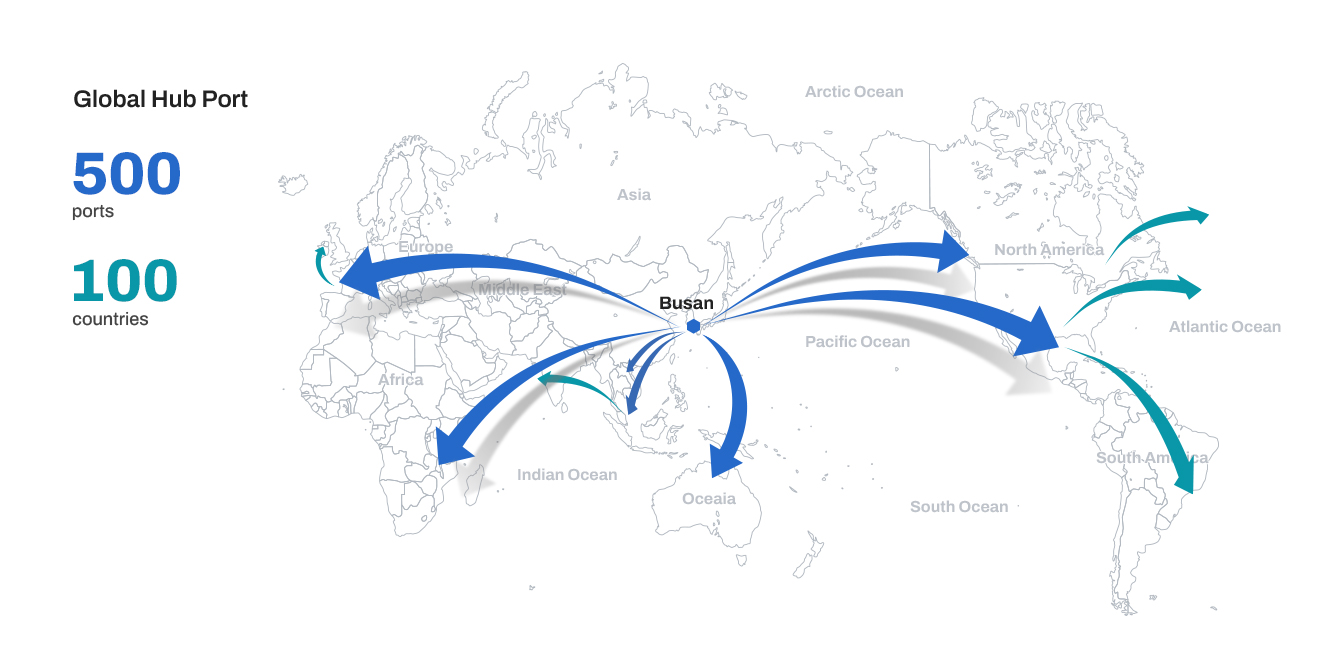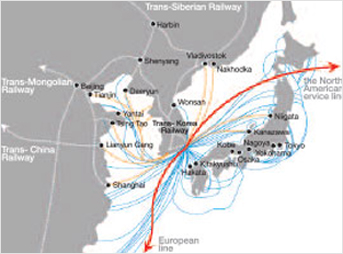Busan Port
Authority
Busan Port at a Glance

Global Hub Port, BPA
Overview
As a hub port with high-tech logistics
facilities in Northeast Asia, trading with 500 ports
in 100 countries in the world. 
facilities in Northeast Asia, trading with 500 ports
in 100 countries in the world.
Busan Port, connecting 500 ports in 100 countries, is the logistics hub port in Northeast Asia in the 21st century.
To accommodate rapidly increasing container traffic in the region, we continue to expand the port facilities and its distribution systems,
while accelerating our development of a state-of-the-art New Port.

Countries 1004
- Albania
- Algeria
- Angola
- Argentina
- Australia
- Austria
- Bahrain
- Bangladesh
- Belgium
- Brazil
- Bulgaria
- Cambodia
- Canada
- Chile
- China
- Colombia
- Costa Rica
- Croatia
- Cuba
- Cypress
- Denmark
- Dominican
- Republic
- Ecuador
- Egypt
- El Salvador
- Estonia
- Finland
- France
- Gabon
- Germany
- Ghana
- Greece
- Grenada
- Guam
- Guatemala
- Haiti
- Honduras
- Hong Kong
- Hungary
- India
- Indonesia
- Iran
- Iraq
- Ireland
- Israel
- Italy
- Jamaica
- Japan
- Kuwait
- Latvia
- Lebanon
- Liberia
- Liechtenstein
- Lithuania
- Madagascar
- Malaysia
- Mauritius
- Mexico
- Mongolia
- Mozambique
- Myanmar
- Nepal
- Netherlands
- New Zealand
- Nicaragua
- Norway
- Oman
- Pakistan
- Palau
- Palestine
- Panama
- Papua New Guinea
- Paraguay
- Peru
- Philippines
- Poland
- Portugal
- Qatar
- Republic of South Africa
- Romania
- Russia
- Saudi Arabia
- Singapore
- Slovenia
- Srilanka
- Sudan
- Sweden
- Swiss
- Syria
- Taiwan
- Thailand
- Trinidad and Tobago
- Tunisia
- Turkey
- Ukraine
- United Arab Emirates
- United Kingdom
- United States of America
- Uruguay
- Uzbekistan
- Vanuatu
- Vietnam
- Yemen
Differentiated Competitiveness
- Driving to be the transshipment hub for global shipping industry
- Implementing cost-cutting measures for distribution
- Extended application of a transshipment (T/S) cargo incentive
- Exemption of port entrance fee for T/S cargoes
- Reduction of entrance and clearance fees for vessels
- Transshipment incentives (for shipping companies with over 5,000 TEUs in annual handling)
- Efficient and rapid customs clearance, quarantine and inspection system
- Global networks
- Promoting overseas port business opportunities to generate transshipment cargoes
- Driving Port Alliances with ports in China and Japan

History of Busan Port
| 1876 | Opening of Busan Port |
|---|---|
| 1906 | Start of pier construction |
| ~ 1945 | Completion of Pier 1~4 and a central pier |
| 1974-1982 |
|
| 1985-1991 |
|
| 1992-1998 |
|
| 1995-2020 |
|
| 2008-2019 |
|
| 2010-2014 | Construction of a new international passenger terminal in Busan Port |

